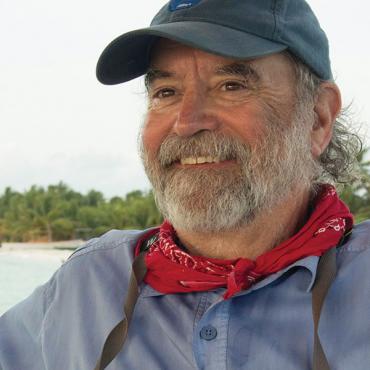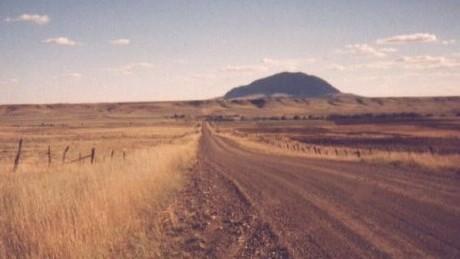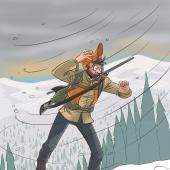A Road to Nowhere
At least until the gate comes down.
The rugged breaks surrounding the Missouri River as it winds across eastern Montana defy the conception of the region’s plains as flat, monotonous terrain. The ambience here hasn’t changed much since Lewis and Clark made their way upstream in 1805. A complex amalgam of riparian and prairie habitat provides a final stronghold for species as diverse as the paddlefish, mountain plover, and pallid sturgeon. The sagebrush steppe atop the cliffs bordering the river includes some of the best remaining sage grouse habitat in the West, and the Missouri River Breaks elk herd is one of the nation’s most robust, drawing Bozeman-area hunters every season.
Best of all, from the outdoor enthusiast’s perspective, most of this wild country lies in the public domain. It’s a complex patchwork of management jurisdictions to be sure, including land overseen by the Upper Missouri Breaks National Monument, the Charles M. Russell National Wildlife Refuge, and the Bureau of Land Management. But with the exception of some private inholdings, it belongs to us, all of us—not to “the government,” but to the citizens of the United States. However, to enjoy it you still have to get there, and roads don’t come easily in the Breaks.
For over a century, the Mabee Road provided one such access route as it wound its way north of Roy, a tiny farm and ranch community located on what is now Hwy. 191, to intersect with Knox Ridge Road in the heart of the Breaks. As part of the Old Missouri Trail, it received regular public use. But during September 2007, two recreationists traveling the road noticed No Trespassing signs and were soon involved in a confrontation with a local landowner, who informed them that the road was private property and threatened them with trespass charges. Charges were indeed filed, and subsequently dismissed.
So, is Mabee Road public or isn’t it? Fergus County has jurisdiction in the matter, and in January 2008 the Public Land/Water Access Association (PLWA) requested that the County Commissioners affirm, based on the evidence provided, that Mabee Road has always been a public road. Two years later, County Attorney Tom Meissner issued an opinion that the disputed segment of the road is private, despite a considerable body of evidence to the contrary.
Some of that evidence goes back a long way. Records show that in 1913 Fergus County ordered a survey of the road. A 1914 map from the United States Surveyor General’s Office shows Mabee Road, as do maps periodically published by Fergus County as far back as 1919. There is no evidence that the county ever abandoned its interest in the road. These findings confirm a century of undisputed public use.
Other more recent evidence in support of the PLWA position makes the county’s opinion even more baffling. First, like every county in the state, Fergus County files periodic reports with the Montana Department of Transportation certifying the total length of all its public roads for purposes of state gasoline tax allocation. The more miles of road, the more state dollars go to the county. The application submitted by Fergus County in 2010 includes Mabee Road in the mileage calculations submitted to the state. Furthermore, in August 2015, Fergus County applied to the state for “Historic Right of Way Easement for Access Roads Upon State Trust Lands.” One of the easements applied for—and granted—was for a portion of Mabee Road where it crosses a state section.
Thus, Fergus County itself considered Mabee Road public when it was applying for tax money from the Department of Transportation and requesting an easement across state property—but not when the road was blocked by the action of a private landowner. That obvious contradiction will now have to be resolved in court. Faced with no other recourse in light of the county’s decision, PLWA filed a formal complaint asking that Mabee Road be affirmed as a public right of way and ordering the county to remove all barriers to public use.
The plaintiff in the case—PLWA—is an all-volunteer, nonprofit group established in 1986 to help maintain legal access to Montana’s public lands and waters. Its work has become especially important over the last decade as Montana land ownership and usage patterns changed dramatically and an increasing number of wealthy out-of-state landowners and commercial outfitting interests began to block established public roads. Some have even openly attacked Montana’s Stream Access Law in court. The group’s record of success has been remarkable, especially in light of its limited resources and the often well-funded nature of the opposition.
Of legal necessity, all landowners whose property the disputed segment of Mabee Road crosses are named as defendants in the case.
What is at stake in the case? Among other matters both practical and aesthetic, some of the best elk hunting in Montana. The disputed portion of Mabee Road provides the sole access to some 10,000 acres of prime breaks elk habitat on public land. Without unimpeded access, these public elk will essentially become privatized for the benefit of a few.
While PLWA is largely a hunter- and angler-driven organization, the resources at risk include more than fish and game. The public lands from which the public could be excluded are rich in history, scenery, and non-game wildlife. And every time a private party illegally blocks access to public land and water, a dangerous precedent becomes established that could help perpetuate similar losses of more public resources in the future, closer to home.
As has so often been the case in the long, complex history of American law involving wildlife and public land, hunters and anglers have again taken the lead in the fight for rights that benefit all citizens who care about the outdoors. Some of those fights have involved big, sexy issues ranging from Yellowstone Park to migratory birds. This one involves a small back road across a lonely stretch of prairie most Americans will never see. But it still should matter to all of us, because the land beyond the gate belongs to all of us. We all should be able to reach it.













